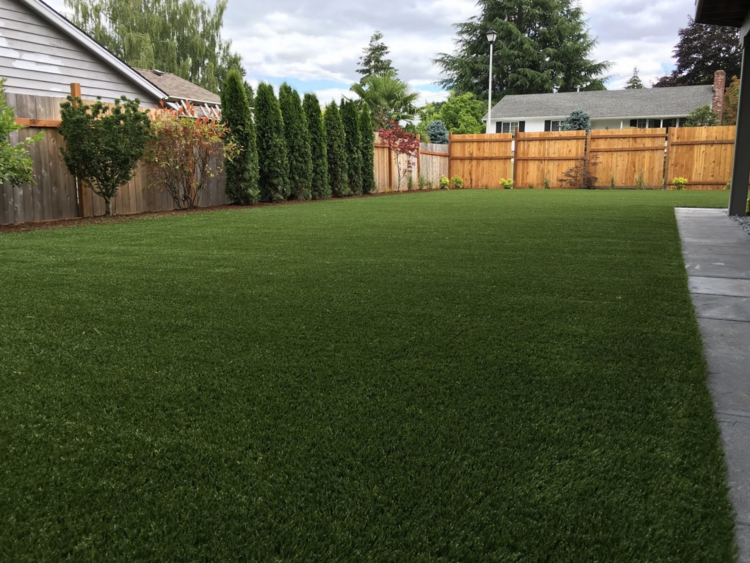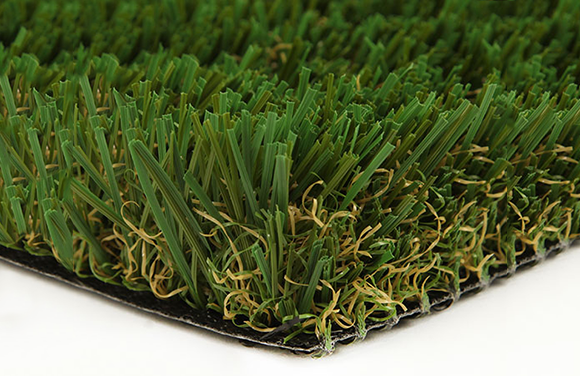Premier Phoenix Turf Companies Delivering Premium Synthetic Lawn Solutions
Premier Phoenix Turf Companies Delivering Premium Synthetic Lawn Solutions
Blog Article
Look Into the Environmental Conveniences of Opting for Artificial Lawn Solutions
The fostering of fabricated lawn remedies provides a compelling chance to deal with pressing environmental challenges. By significantly lowering water usage and decreasing the application of unsafe chemicals, these options not only promote sustainable landscape design but likewise safeguard local ecological communities.
Water Preservation Advantages
One of the most considerable advantages of synthetic grass is its capability to preserve water. In contrast, synthetic lawn does not need watering, significantly decreasing the general need for water resources.
By removing the need for regular watering, fabricated turf contributes to lasting landscape methods and aids mitigate the environmental effect of extreme water intake. The conservation of water prolongs to the decrease of overflow, which can lead to soil disintegration and river contamination.
Additionally, the setup of synthetic grass enables districts and homeowners to assign water resources much more successfully, focusing on vital uses such as alcohol consumption water and agriculture. The shift in the direction of synthetic grass not only advertises liable water use but likewise lines up with more comprehensive ecological objectives intended at protecting natural sources.
As communities significantly focus on sustainability, the water preservation advantages of fabricated grass offer a compelling case for its fostering in residential and business landscape design tasks.
Decreased Chemical Usage
The transition to fabricated turf dramatically lowers the reliance on chemical therapies generally utilized in natural turf maintenance. Typical lawn monitoring commonly entails the application of plant foods, pesticides, and herbicides to advertise development and control pests. These chemicals can present threats to human health and wellness, regional wild animals, and the atmosphere, adding to dirt and water contamination.
In contrast, synthetic grass removes the demand for these damaging compounds. When set up, it calls for marginal upkeep, primarily being composed of routine cleaning and seldom infill replenishment. This decrease in chemical usage not just profits the prompt setting however also contributes to wider environmental stability. By lessening the launch of synthetic substances into the ecosystem, artificial grass promotes healthier soil and water supply.
Additionally, the lack of chemical overflow associated with synthetic grass installments helps safeguard neighborhood waterways from air pollution, supporting aquatic life and keeping biodiversity. Phoenix turf companies. As areas significantly prioritize sustainable practices, choosing fabricated grass provides a sensible option that lines up with ecological preservation goals. Through this shift, homeowner can appreciate rich eco-friendly areas without endangering ecological wellness, leading the way for an extra lasting future
Lower Carbon Impact

In addition, the installment of fabricated grass can lead to substantial water conservation. All-natural grass require substantial quantities of water for irrigation, which not only includes in the carbon footprint linked with water removal and therapy but likewise pressures local water resources. On the other hand, synthetic grass needs marginal maintenance, needing no watering, thus significantly lowering water use and its connected energy prices.
Furthermore, the durability of synthetic grass adds to its lower carbon influence. With a lifespan of approximately 15 years or more, the demand for frequent substitutes is decreased, leading to less waste and lower power usage in production and disposing of typical grass choices. Overall, artificial lawn offers a sustainable alternative for environmentally conscious landscaping.
Habitat Preservation
Environment preservation is a crucial factor to consider in the argument over landscape design choices, especially when comparing synthetic grass to natural turf. Natural grass yards commonly require substantial upkeep, consisting of the use of chemicals, herbicides, and fertilizers, which can detrimentally affect neighborhood communities. These chemicals can seep right into the dirt and rivers, harming native flora and fauna and interfering with neighborhood environments.
In comparison, synthetic turf offers a possibility to minimize the ecological impact of landscape design. By going with artificial turf, house owners can minimize the disturbance of natural habitats related to traditional lawn care methods. Synthetic grass gets rid of the demand for unsafe chemicals, thus securing nearby wildlife and maintaining the honesty of bordering ecosystems. The setup of artificial turf can lead to the conversion of former yard locations into even more biodiverse landscapes, such as pollinator yards or indigenous plant areas, which can support neighborhood wild animals.
Ultimately, the shift to synthetic grass not just saves water and minimizes maintenance initiatives yet likewise fosters a much more harmonious connection between human activities and the natural surroundings, promoting habitat preservation in the process.
Long-Term Sustainability
Lasting sustainability is an important factor in examining the benefits of fabricated turf over conventional yard lawns. One of one of the most significant benefits of pop over to this web-site fabricated turf is its resilience; it can last as much as 15-20 years with marginal maintenance, whereas all-natural yard needs frequent reseeding and replacement. This long life minimizes the demand for continuous resources, such as water, fertilizers, and chemicals, which are necessary for preserving a healthy and balanced grass lawn.
In addition, fabricated turf adds to a reduction in carbon discharges associated with grass care equipment. Typical lawns frequently require gas-powered mowers, trimmers, and blowers, all of which add to air contamination. Artificial turf companies phoenix. On the other hand, fabricated lawn removes the demand for such tools, advertising a cleaner environment
In addition, the manufacturing of fabricated lawn increasingly makes use of recycled materials, improving its sustainability account. As producers take on eco-friendly methods, the ecological footprint of fabricated grass remains to decrease.

Conclusion
The adoption of artificial lawn services offers substantial environmental advantages, consisting of considerable water conservation, lowered visit dependence on unsafe chemicals, and a reduced carbon impact. Additionally, synthetic grass aids in maintaining natural environments by minimizing land disturbance and advertising long-lasting sustainability through the use of resilient products. Jointly, these elements emphasize the possibility of artificial lawn to add favorably to ecological health and wellness and supply a viable option to traditional landscaping techniques in a progressively resource-conscious globe.
In contrast, synthetic grass does not require watering, dramatically decreasing the total demand for water resources. By reducing the launch of artificial compounds right into the community, man-made grass advertises healthier dirt and water systems.
Furthermore, the installment of artificial grass can result in substantial water conservation. In comparison, artificial turf requires marginal upkeep, calling for no watering, thus substantially lowering water use and its linked energy costs.

Report this page